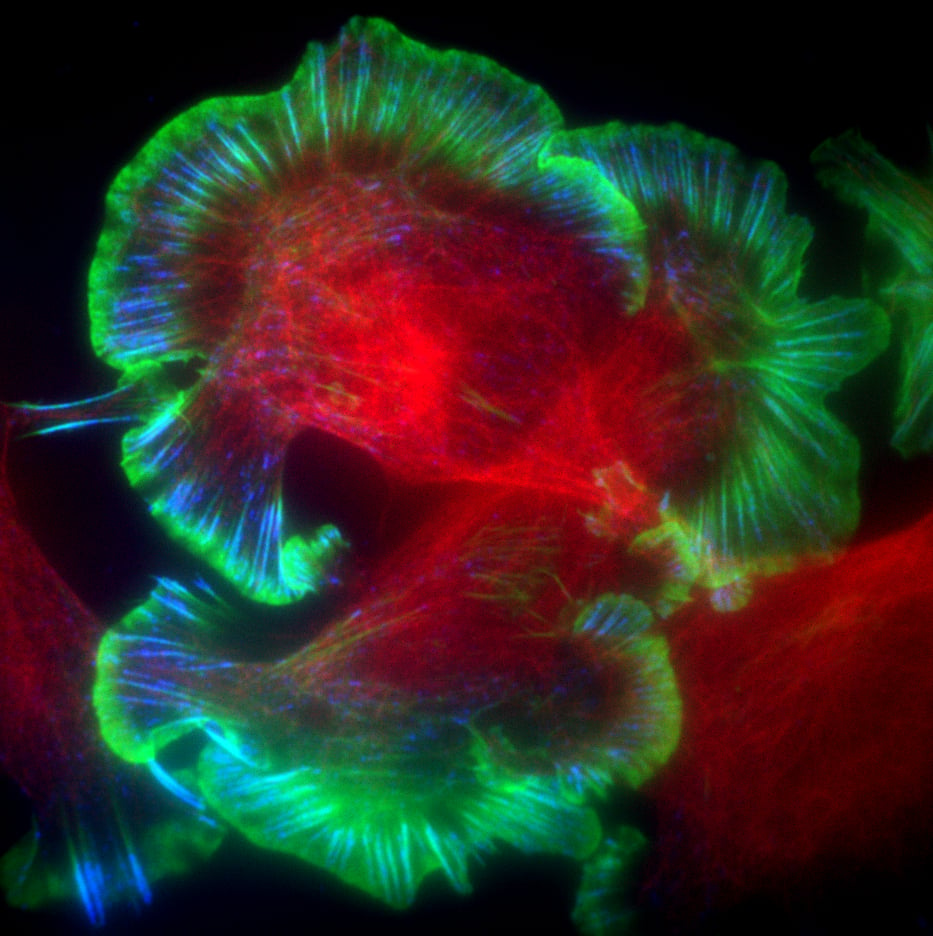
Dr Chris Bakal and Oliver Inge's winning photgraph: Metastatic mouse melanoma cells spreading on a collagen matrix and imaged by Total Internal Reflection Fluorescence (TIRF) microscopy. Actin in green, focal adhesions in blue, and tubulin in red.
Dr Chris Bakal’s and Oliver Inge's image of metastatic melanoma cells – which they described as master shape-shifters – has been crowned the winner of the ICR's 2017 Science Photography and Imaging Competition.
When cancer spreads through the body, metastatic cells make journeys through different environments with radically different compositions – from soft, fluid-like tissues to hard bone. Crossing each tissue requires metastatic cells to assume different shapes.
Sign up to see all of the incredible images below and many more, on display in Sutton Library throughout July.
Join us in Sutton
The winning image shows metastatic melanoma cells as they feel their way through their environment using adhesions (marked in blue) at the plasma membrane of cells, changing their shape to suit the tissue they are invading.
Dr Bakal took this image using the new 'total internal reflection fluorescence' (TIRF) microscope, which allows us to see cells at the point where they are making contact with their environment, and capture structures such as adhesions that would otherwise be difficult to see.
The judging panel selected the image for its visual impact, and for its ability to bring a complicated scientific concept to life. The image was commended for its strong sense of movement suggesting something was about to happen, and for the way the image was related back to the patient.
Dr Bakal and Dr Inge will receive a prize of £250, and the image will be displayed as artwork around the ICR and at the ICR conference later in the year, together with the other shortlisted entries.